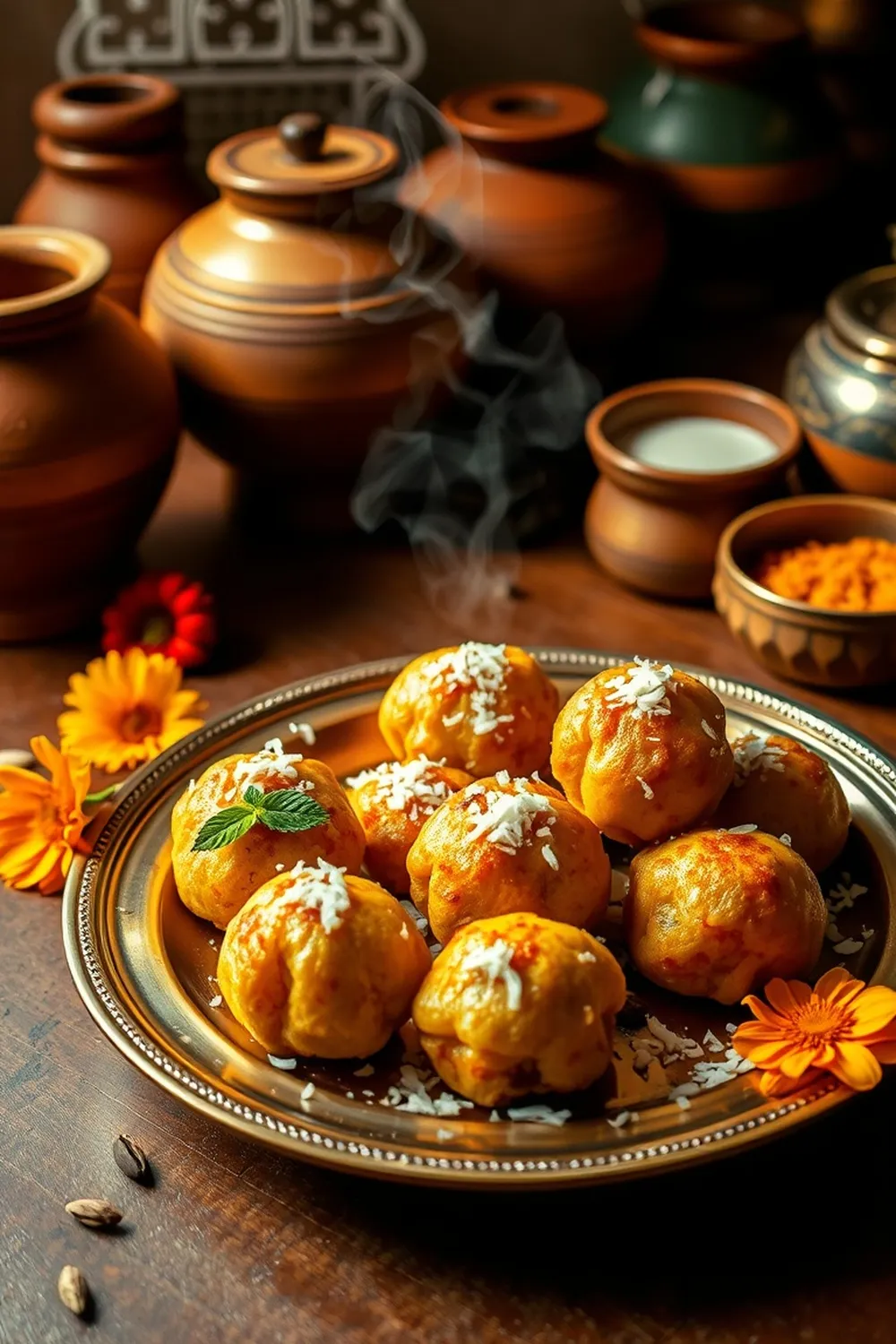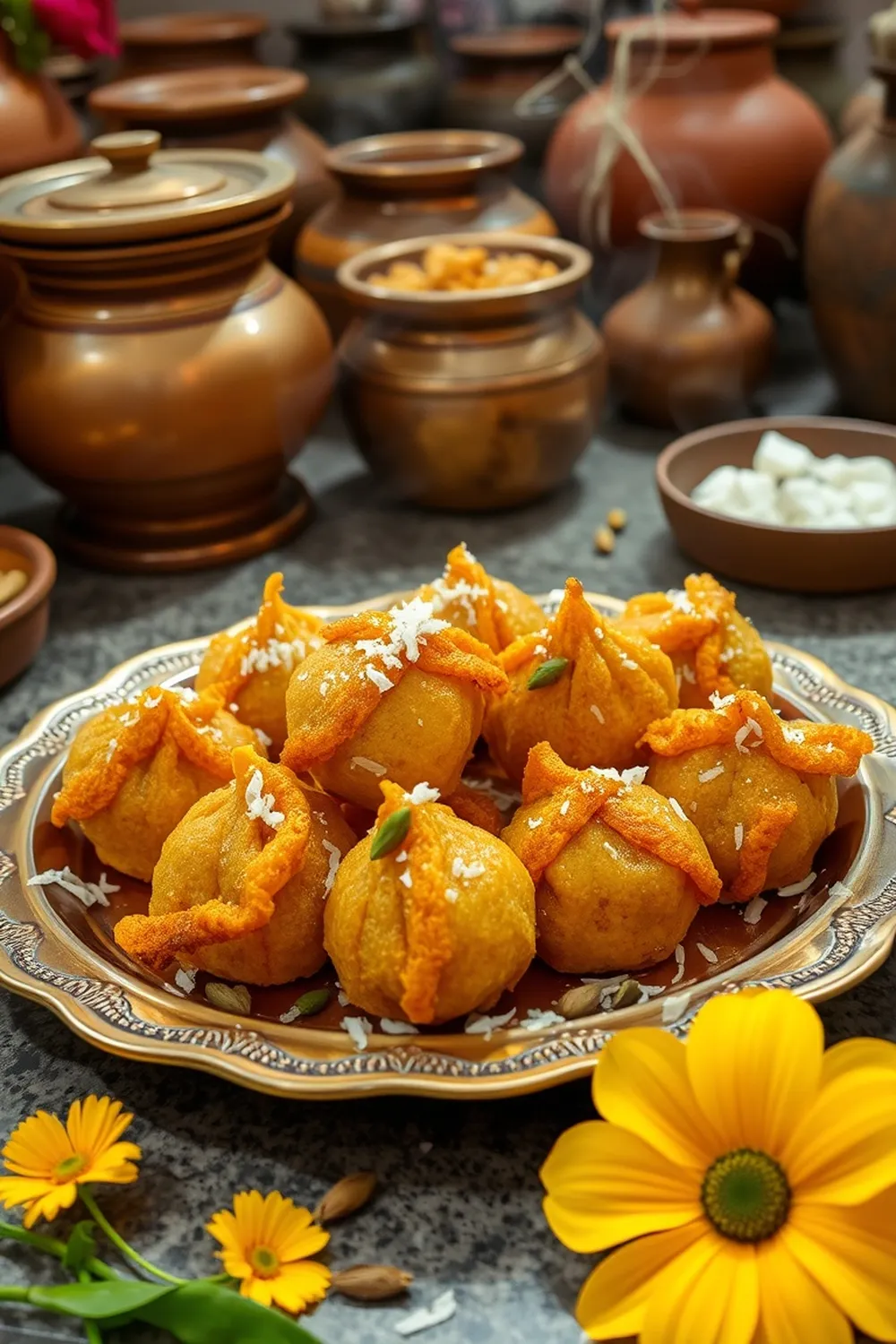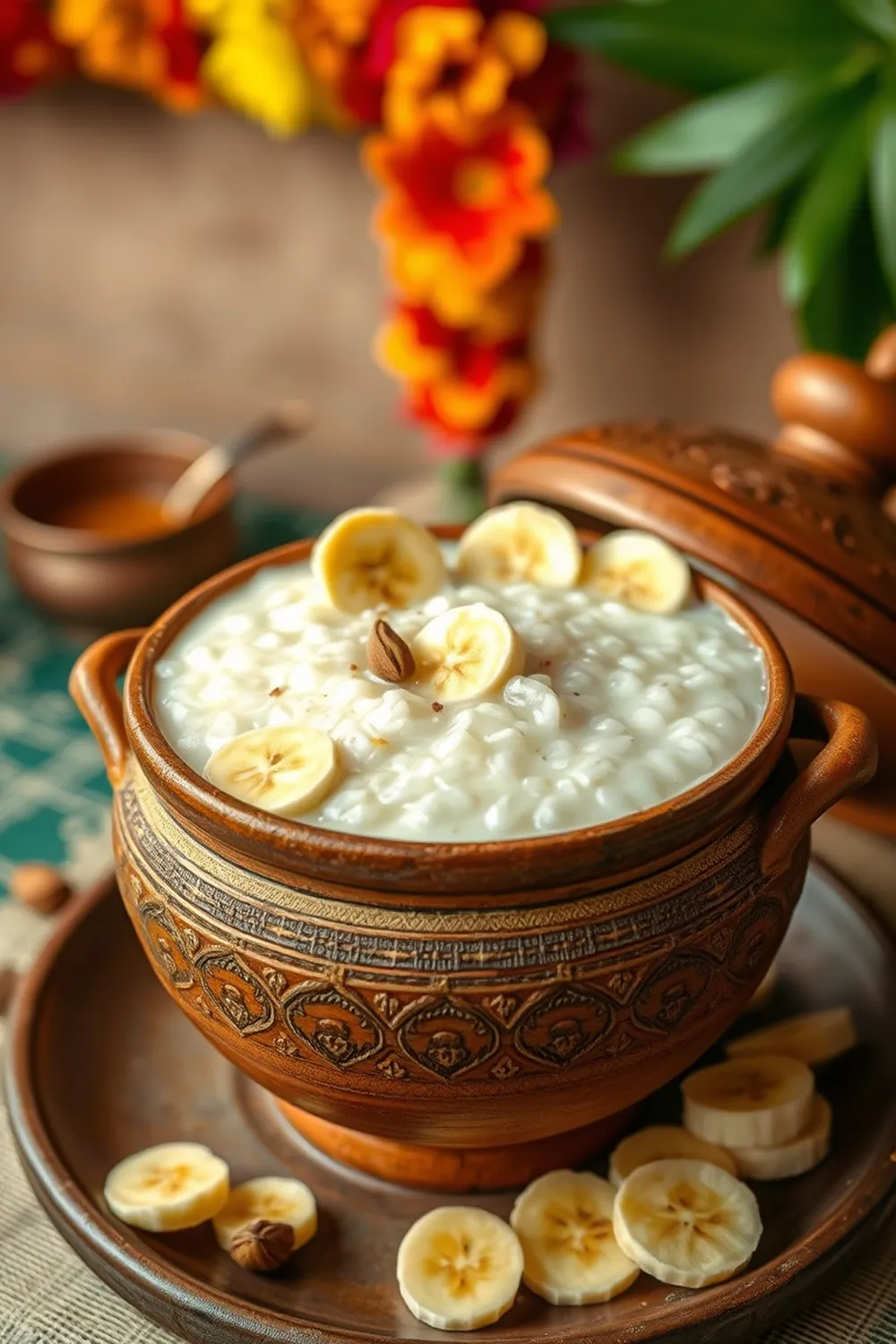- Grind soaked black gram dal and rice into a thick batter (with a consistency similar to dosa batter). Add salt and set aside.
- Pressure cook bengal gram until tender. Drain any excess water.
- Mash the cooked dal with jaggery or sugar in a heavy-bottomed vessel.
- Cook the mixture over medium heat, stirring continuously to prevent sticking, until it forms a thick paste.
- Mix in the coconut and cardamom powder. Form the mixture into small balls.
- Heat oil for deep frying.
- Dip the balls in the batter, ensuring they are completely coated.
- Fry 4-5 balls at a time until golden brown.
- Drain the fried balls on paper towels and serve warm.
- Calories:250 kcal25%
- Energy:1046 kJ22%
- Protein:5 g28%
- Carbohydrates:30 mg40%
- Sugar:15 mg8%
- Salt:150 g25%
- Fat:12 g20%
Last Updated on 6 months ago by Neha Deshmukh
Authentic Urad Dal & Chana Dal Sweet Balls Recipe – A Traditional Indian Treat
Hey everyone! Today, I’m so excited to share a recipe that’s been a family favorite for generations – these incredibly delicious Urad Dal & Chana Dal Sweet Balls. They’re a little bit of work, but trust me, the melt-in-your-mouth goodness is so worth it. I remember making these with my grandmother during festival season, and the aroma alone brings back such warm memories. Let’s get cooking!
Why You’ll Love This Recipe
These aren’t just any sweet treat. They’re a beautiful blend of textures – a slightly crispy exterior from the frying, and a soft, melt-in-your-mouth interior. The combination of urad dal and chana dal gives a unique flavour profile that’s subtly sweet and wonderfully aromatic. Plus, they’re perfect for festivals, special occasions, or just a cozy afternoon snack with a cup of chai.
Ingredients
Here’s what you’ll need to make these delightful sweet balls:
- ½ cup black gram dal (urad dal/minappappu) – about 100g
- 1 cup rice – about 180g
- 1 cup bengal gram (channa dal/sengapappu) – about 200g
- 1 cup sugar or grated jaggery – about 200g
- ¼ cup fresh grated coconut – about 30g
- ¾ tsp cardamom powder – about 3g
- Salt to taste
- Oil for deep frying
Ingredient Notes
Let’s talk ingredients! Getting these right will make all the difference.
Urad Dal (Black Gram Dal) – Varieties & Significance
Urad dal is the star of many South Indian dishes, and for good reason! It creates a wonderfully fluffy texture. You can use whole urad dal or split urad dal (urad dal chilka). I prefer whole for this recipe, as it gives a slightly better texture.
Rice – Choosing the Right Grain
Any short-grain rice will work well here. I usually use sona masoori rice, as it’s readily available and grinds beautifully.
Bengal Gram (Chana Dal) – Regional Variations & Nutritional Benefits
Chana dal adds a lovely nutty flavour and helps bind the mixture. It’s a great source of protein and fibre too! In some regions, they add a touch of besan (gram flour) for extra binding, but I find the chana dal is sufficient.
Jaggery vs. Sugar – Flavor & Health Considerations
This is a personal preference! Sugar gives a cleaner sweetness, while jaggery adds a beautiful caramel-like flavour and is considered slightly healthier. I often use a mix of both for a balanced taste. If using jaggery, make sure it’s finely grated for easier melting.
Cardamom Powder – Fresh vs. Store-Bought
Freshly ground cardamom is always best! The aroma is incredible. If you’re using store-bought, make sure it’s from a good quality brand.
Coconut – Fresh vs. Dried
Freshly grated coconut is my go-to. It adds a lovely moisture and flavour. If you can’t find fresh, unsweetened desiccated coconut works well too – just add a tablespoon or two of milk or water to rehydrate it slightly.
Oil for Deep Frying – Best Options for Flavor & Health
I prefer using groundnut oil or sunflower oil for deep frying. They have a high smoke point and a neutral flavour. Make sure the oil is hot enough before adding the sweet balls – this is key to getting them crispy!
Step-By-Step Instructions
Alright, let’s get down to business!
- First, grind the soaked black gram dal and rice into a thick batter. You want it to be similar in consistency to dosa batter. Set this aside.
- Next, pressure cook the bengal gram until it’s beautifully tender. Usually 3-4 whistles on medium heat does the trick. Drain any excess water.
- Now, mash the cooked dal with the sugar or jaggery in a heavy-bottomed vessel. This takes a little elbow grease!
- Place the vessel on medium heat and cook the mixture, stirring constantly to prevent it from sticking. This is where patience comes in! It will start to come together into a thick paste.
- Once the mixture is thick and smooth, take it off the heat and mix in the grated coconut and cardamom powder. Let it cool slightly, then form small balls – about 1 inch in diameter.
- Heat the oil for deep frying over medium heat.
- Dip each ball into the urad dal batter, ensuring it’s completely coated.
- Carefully drop 4-5 balls into the hot oil at a time. Don’t overcrowd the pan!
- Fry until they’re golden brown and crispy, turning occasionally.
- Drain the sweet balls on paper towels to remove excess oil. Serve them warm and enjoy!
Expert Tips
Here are a few things I’ve learned over the years to make this recipe even better:
Achieving the Perfect Batter Consistency
The batter should be thick enough to coat the balls but not too thick that it becomes difficult to work with. If it’s too thick, add a splash of water.
Preventing the Mixture from Sticking During Cooking
Seriously, stir constantly! A heavy-bottomed vessel is essential here. If it still sticks, add a teaspoon of ghee.
Ensuring Even Coating with the Batter
Make sure the balls are slightly cooled before dipping them in the batter. This helps the batter adhere better.
Maintaining Oil Temperature for Optimal Frying
The oil should be hot enough to cook the balls through but not so hot that they burn. A good test is to drop a tiny piece of batter into the oil – it should sizzle and rise to the surface.
Knowing When the Sweet Balls are Perfectly Golden Brown
They should be a beautiful golden-brown colour and feel firm to the touch.
Variations
Want to switch things up? Here are a few ideas:
Vegan Adaptation
Simply substitute the sugar with a vegan-friendly sweetener like maple syrup or agave nectar.
Gluten-Free Adaptation
This recipe is naturally gluten-free! Just double-check that your cardamom powder hasn’t been processed in a facility that also handles gluten.
Adjusting the Sweetness Level
Feel free to adjust the amount of sugar or jaggery to your liking. I sometimes reduce it slightly if I’m serving these with a very sweet beverage.
Festival Adaptations (Holi, Diwali, etc.)
During Diwali, my aunt adds a tiny pinch of saffron to the batter for a beautiful golden hue. For Holi, we sometimes add a sprinkle of edible colour!
Spice Level Variation – Adding a Hint of Nutmeg or Saffron
A tiny pinch of nutmeg or saffron can add a lovely warmth and complexity to the flavour.
Serving Suggestions
These sweet balls are delicious on their own, but they’re even better with a cup of hot chai or a glass of cold milk. They also make a lovely addition to a festive platter.
Storage Instructions
Store the cooled sweet balls in an airtight container at room temperature for up to 3 days. They tend to lose their crispness over time, but they’ll still taste delicious!
FAQs
Let’s answer some common questions:
What is the origin of this sweet ball recipe?
This recipe has roots in South Indian cuisine, particularly in Tamil Nadu and Andhra Pradesh. Variations exist across different regions, but the core concept of combining urad dal and chana dal remains the same.
Can I make these sweet balls ahead of time?
You can prepare the dal mixture and form the balls ahead of time. Store them in the refrigerator and fry them just before serving.
What is the best way to grind the dal for a smooth batter?
Soaking the dal for at least 4-6 hours is crucial. Use a good quality blender or grinder and add water gradually to achieve a smooth consistency.
Can I use a different type of dal instead of Bengal gram?
While chana dal is traditional, you could experiment with moong dal (split yellow lentils) for a slightly different flavour.
How can I adjust the texture of the sweet balls – softer or firmer?
For softer balls, add a little more cooked dal to the mixture. For firmer balls, add a little less.
What is the shelf life of these sweet balls?
They’re best enjoyed fresh, but they’ll stay good for up to 3 days stored in an airtight container at room temperature.
Neha Deshmukh
Neha holds a B.A. in History with a focus on Indian and world history, including ancient, medieval, and modern periods. At RecipesOfIndia.org — the world’s largest database of Indian recipes — she combines her love for food and history by exploring how India’s past has shaped its culinary traditions.










